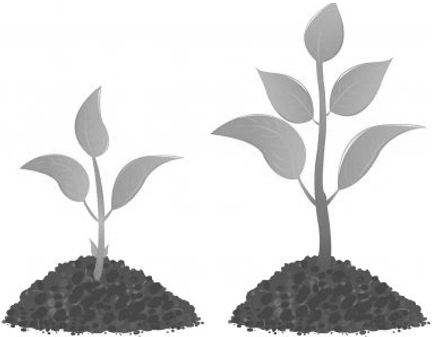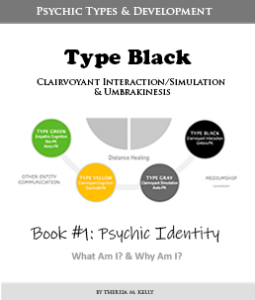- Authenticity & Accuracy of Psychic Experiences (Type Gray)
- Notice Psychic Clues & Become Confident In Your Psychic Experiences (Type Gray)
- Limiting Factors for Psychic Potential (Type Gray)
- Age and Psychic Experiences (Type Gray)
- Creativity, Flexibility, Curiosity, Adventure, and Psychic Potential (Type Gray)
- Challenges, Unity, and Psychic Potential (Type Gray)
- Gratitude, Thankfulness, and Psychic Potential (Type Gray)
- Emotional Intelligence & Psychic Potential (Type Gray)
- Emotional Intelligence & Psychic Potential: Part 3 (Type Gray)
- Emotional Intelligence & Psychic Potential: Part 4 (Type Gray)
- Emotional Intelligence & Psychic Potential: Part 5 (Type Gray)
- Vocabulary, Descriptive Power, & Psychic Potential (Type Gray)
- Vocabulary, Descriptive Power, & Psychic Potential: Part 2 (Type Gray)
- Life Experience & Psychic Potential (Type Gray)
- Age of Onset & Psychic Potential (Type Gray)
- Personality Extremes & Combinations (Type Gray)
- Personality Extremes & Combinations: Part 2 (Type Gray)
- Psychic Experience Characteristics of Personality Type 1 (Type Gray)
- Psychic Experience Characteristics of Personality Type 2 (Type Gray)
- Psychic Experience Characteristics of Combination Gray/Yellow (Type Gray)
- Psychic Experience Characteristics of Combination Gray/Black (Type Gray)
- Psychic Experience Characteristics of Combination Gray/Green (Type Gray)
- Psychic Experience Characteristics of Combination Gray/Blue (Type Gray)
- Psychic Experience Characteristics of Combination Gray/Red (Type Gray)
- Psychic Experience Characteristics of Combination Gray/White (Type Gray)
- Psychic Experience Characteristics of Combination Gray/Purple (Type Gray)
- Model of Psychic Experiences: The Top 4 (Type Gray)
- Model of Psychic Experiences: The Bottom 4 (Type Gray)
- How To Become A Type Gray Extreme: Intuition (Type Gray)
- How To Become A Type Gray Extreme: Intuition II (Type Gray)
CLUES & CONFIDENCE
While this book gives you a great deal of information on how clairvoyant simulation and auto-PK work, and don’t work, there are a lot of ![]() you will need to be aware of to work with subtle intuitive impressions, flashes of images, dreams, and so on.
you will need to be aware of to work with subtle intuitive impressions, flashes of images, dreams, and so on.
 As you learn to observe and understand your experiences and how they work and don’t work, you’ll begin to trust your experiences and they will become more reliable.
As you learn to observe and understand your experiences and how they work and don’t work, you’ll begin to trust your experiences and they will become more reliable.
With clairvoyant simulation, psychic information comes to you so naturally that it’s very hard to distinguish your educated guesses from psychic experiences. So difficult, that you’re focus should not be on asking yourself which is which.
INSTEAD, focus on whether or not you feel like you need to ask that question in the first place. I say this because clairvoyant simulation input experiences usually come to you with a degree of certainty, a feeling of being completely sure, and trust in the experience.
 If you receive an impression, and don’t immediately question its authenticity and accuracy, the experience is more likely to be a psychic experience than non-psychic intuition.
If you receive an impression, and don’t immediately question its authenticity and accuracy, the experience is more likely to be a psychic experience than non-psychic intuition.
However, if your intuition is trying to tell you something, and you immediately start questioning yourself, this could be a “tell” that it’s just a product of your subconscious guesswork.
So, first ask yourself:
“Was the information received with a degree of confidence?”
Second, test that hallucination or intuitive impression to see if it was indeed psychic or not based on its accuracy. This means you need to act on the information you received.
 For shifting and auto-PK, you will need a method of measurement, record, and control. For example, in the case of healing intention and healing-PK, you should probably start with plants, then work your way up to animals, and then people.
For shifting and auto-PK, you will need a method of measurement, record, and control. For example, in the case of healing intention and healing-PK, you should probably start with plants, then work your way up to animals, and then people.
We’ll look at methods and designs in the next chapter, but let’s say you want to grow two plants from seeds. You will want to focus your intention on one set of seeds and ignore the other.
Then, as the two seedlings grow under the same conditions, you can chart their progress and see if there are any differences in the health and growth of the two seedlings.
 The “control” is the seedling being ignored, and the “measurement” can be the recorded difference in size of the seedlings, and even their color if one is greener and healthier looking than the other.
The “control” is the seedling being ignored, and the “measurement” can be the recorded difference in size of the seedlings, and even their color if one is greener and healthier looking than the other.
There are also many different scientific tools and devices you can use to measure electrical, light, and thermal activity for many forms of auto-PK like thermometers, voltmeters, and so on.
Third, continue to test your experiences to build a whole new level of confidence as you begin feeling out the differences over time.
The more confidence you build, the more skills you build, and the more skills you build, the more confident you become.
-
Ask – Was the information received with a degree of confidence? How did it feel?
-
Act – Did the information received turn out of be true and accurate? Did you measure and find a difference in the two samples? (Example, the two seedlings.)
-
Acquire – Did you learn something new about your experiences and apply that something new to build new skills?)







